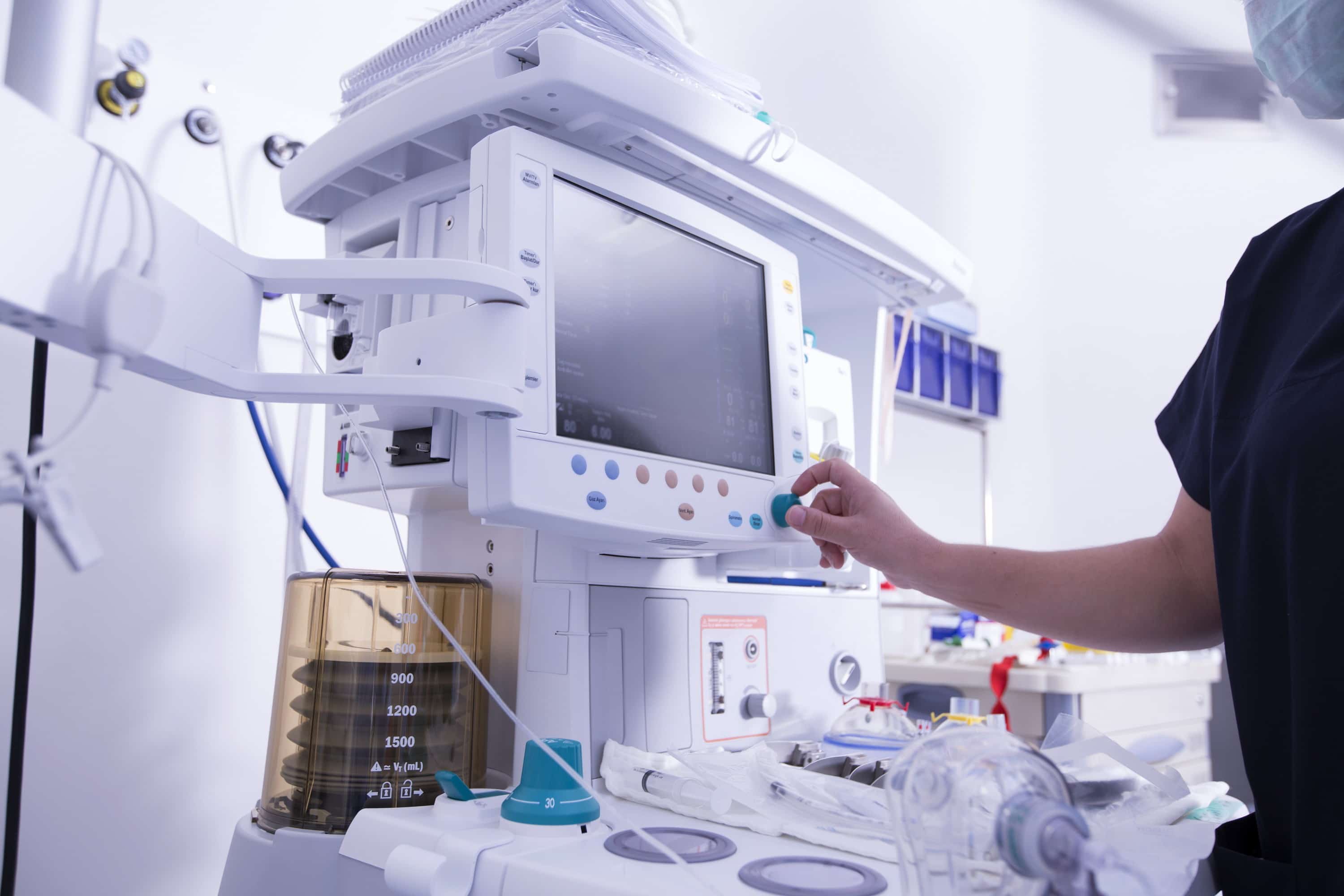
Atrial fibrillation (A Fib) is the most common sustained arrhythmia among adults. A Fib is characterized by disordered cardiac conduction within the atria, resulting in a classically irregularly irregular heart rhythm. The absence of P-waves represents disorganized atrial contraction and is a hallmark electrocardiographic (EKG) finding associated with A Fib. A Fib is concerning to perioperative providers because of its potentially fatal consequences, including cardiovascular collapse associated with tachyarrhythmias and thromboembolic events.
While chronic A Fib develops from several secondary causes, surgery is a common and discrete precipitant. One study found that 4% of adults develop A Fib after non-cardiac surgery.1 A more recent database study revealed that, in descending order of risk, intrathoracic, vascular, and intra-abdominal surgeries were associated with clinically-important AFib.2 In this study, age greater than 85 years was the strongest variable correlated with the development of A Fib.
Developing A Fib after cardiac surgery is more common than other surgeries, with the likelihood of developing A Fib ranging from 30-50% post-cardiac surgery.3 Among patients undergoing coronary artery bypass grafting (CABG), risk factors for postoperative A Fib include the following: age over 80 years, concurrent valvular surgery, off-pump procedures, withdrawal of beta blocker or angiotensin converting enzyme inhibitors, and prior history of A Fib or chronic obstructive pulmonary disease.4 Common prevention strategies include the use of perioperative beta blockers, amiodarone, and intracardiac atrial pacing.5 Despite having several models for risk stratification, no current standard exists for predicting whether a patient is at high or low risk for developing postoperative AFib.3 Thus, individualized assessments should be made by anesthesiologists, cardiothoracic surgeons, and cardiologists.
Initial assessment of new-onset (i.e., less than 48 hours since sinus rhythm) postoperative A Fib should focus on the stability of the patient. Patients with EKG findings of tachyarrhythmia (sustained heart rate >100 beats per minute) require immediate bedside attention. Patient complaints of newly developed lightheadedness, dizziness, chest pain, dyspnea, or diaphoresis should prompt providers to arrange for urgent direct current cardioversion (i.e., synchronized) at 100-200 joules. Administration of sedation or amnestic therapies (e.g., benzodiazepines) prior to cardioversion should be done at the anesthesiologist’s or cardiologist’s discretion. Stabilization of the arrhythmia may require multiple shocks and intravenous therapies.
Stable patients with new-onset A Fib and no associated symptoms should be medically managed prior to discharge from the recovery room. Standard laboratories should be obtained, with particular attention to values for hemoglobin, potassium, magnesium, and calcium levels. Intravenous beta-1 selective beta blockers (e.g., metoprolol, esmolol) are first-line therapies for A Fib. Second-line medications include intravenous non-dihydropyridine calcium channel blockers (e.g., diltiazem, verapamil). A Fib that is recalcitrant to the above therapies may respond to intravenous amiodarone. Caution should be exercised with the loading dose of amiodarone, as rapid administration may result in hypotension.
References:
- Vaporciyan AA, et al. Risk factors associated with atrial fibrillation after noncardiac thoracic surgery: analysis of 2588 patients. J Thorac Cardiovasc Surg. 2004;127(3):779
- Alonso-Coello P, et al. Predictors, Prognosis, and Management of New Clinically Important Atrial Fibrillation After Noncardiac Surgery: A Prospective Cohort Study. Anesth Analg. 2017;125(1):162-169
- O’Brien B, et al. Society of Cardiovascular Anesthesiologists/European Association of Cardiothoracic Anaesthetists Practice Advisory for the Management of Perioperative Atrial Fibrillation in Patients Undergoing Cardiac Surgery. J Cardiothorac Vasc Anesth. 2019 Jan;33(1):12-26.
- Mathew JP, et al. A multicenter risk index for atrial fibrillation after cardiac surgery. JAMA. 2004;291(14):1720
- Arsenault KA, et al. Interventions for preventing post-operative atrial fibrillation in patients undergoing heart surgery. Cochrane Database Syst Rev. 2013




